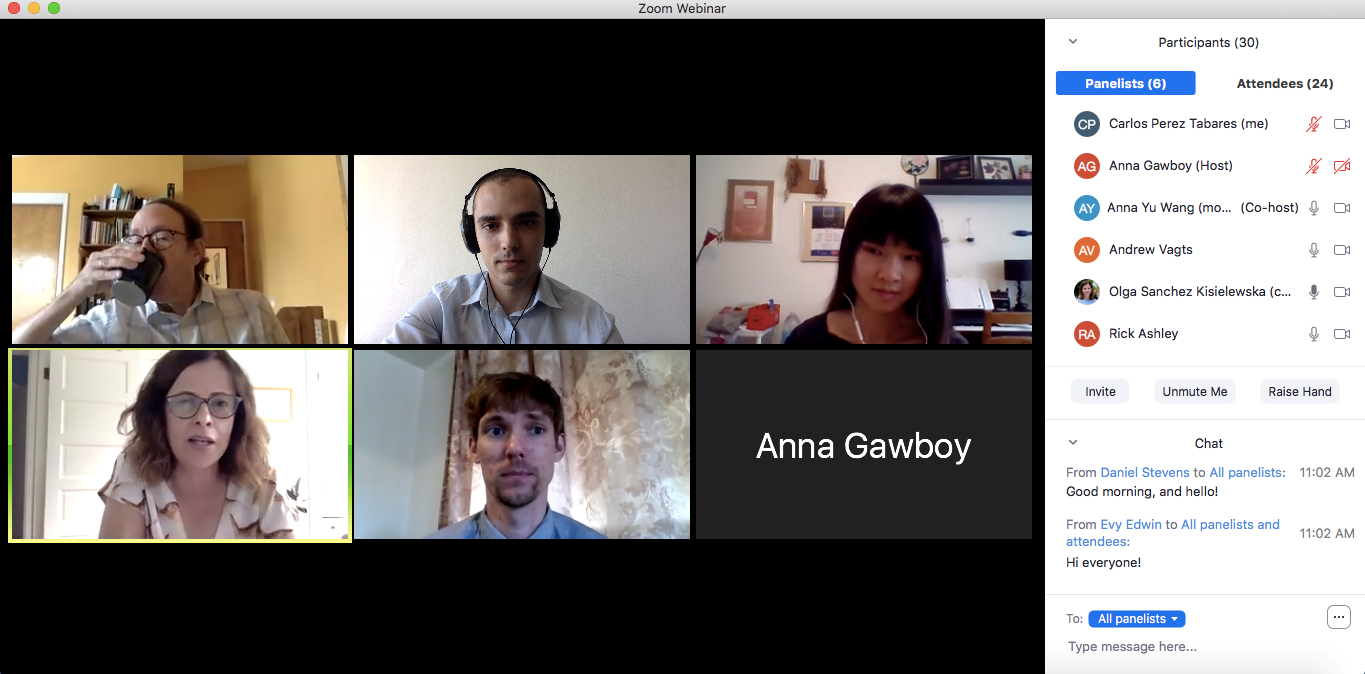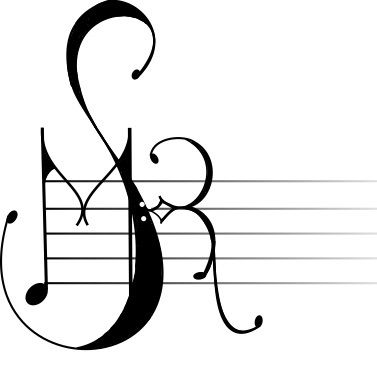
I recently presented a paper entitled “La Sensibile È Mobile! Descending Leading Tones in Italian Opera from the Primo Ottocento” at the thirty-first meeting of Music Theory Midwest. Like many other conferences this year, this meeting was held online, albeit in a slightly unique format. Indeed, there were no “presentations” per se, but rather an online archive with PDFs and videos that all conference “attendees” were able to access for several weeks. For each of the originally scheduled sessions, MTMW organized a Q&A webinar in which panelists answered questions from the (virtual) audience. Mine took place on June 30, and it included short presentations by Professor Richard Ashley (Northwestern University), Andrew Vagts (University of North Texas), and myself.
While having my first “grown-up conference” be partially cancelled was unsettling in a way, getting to present a paper from the comfort of my apartment certainly helped offset my first-time presenter’s nervousness. Actually, the situation reminded me a lot of that terrible, outdated piece of public-speaking advice, “just picture your audience in their underwear!”. I certainly did not do that, but the fact that many of the usual conference-going formalities (like wearing uncomfortable dressy clothes) were off the table did help me overcome my fear of presenting in front of respected academics and talented colleagues. In fact, I found that everyone was extremely nice and receptive of my ideas. I heard some excellent questions and got incredibly helpful advice for further research. And of course, Andrew’s and Professor Ashley’s presentations were fantastic!
E-conferencing worked surprisingly well, all thanks to the hard work of MTMW and their tech team. If anything, I think the virtual format ended up making interactions between junior and senior scholars (which are kind of the point of these conferences) less intimidating. I look forward to seeing how other conferences, particularly this year’s SMT/AMS, adapt to online platforms in order to facilitate these exchanges.
—Carlos Pérez Tabares
Abstract:
Listeners familiar with tonal classical music generally expect leading tones within dominant harmonies to resolve up to tonic. In many operatic melodies from the primo ottocento (ca. 1800–1850), however, leading tones in the soloists’ parts, even when supported by a cadential V, may descend to ^5, ^3, or the ^1 an octave lower than expected. Examination of primo ottocento operas reveals that the descending leading-tone figure is so pervasive that it can be considered an idiomatic feature of this repertory. In this essay, I offer representative examples of descending leading tones from five early Romantic Italian operas: Il barbiere di Siviglia (1816) and Guillaume Tell (1829) by Rossini, Norma (1831) by Bellini, L’elisir d’amore (1832) by Donizetti, and Rigoletto (1851) by Verdi. Examination of these excerpts will reveal several common presentation types for the idiomatic descent. Also, I discuss examples in which the prototypical descents are masked, i.e., obscured by elements of the musical surface. Before introducing these analyses, I address the issue of historical precedents for descending leading tones, tracing them back to the nineteenth-century Italian ballata. I close the essay with speculation about why, within this repertory, the descending leading-tone figure is accepted so easily by the ear.
Recent Posts
SMR to Host Midwest Graduate Music Consortium 2025 Conference – January 13, 2025
SMR Welcome BBQ at County Farm Park – October 01, 2024
Julian Grey defends dissertation – June 05, 2024
Michaela Franzen defends dissertation – May 21, 2024
Kai West defends dissertation – May 16, 2024
Micah Mooney and Carlos Pérez Tabares present at Music Theory Midwest – May 12, 2024
SMR end-of-year round-up at County Farm Park – April 25, 2024
SMR hosts Research Showcase – September 29, 2023
 Society for Music Research
Society for Music Research